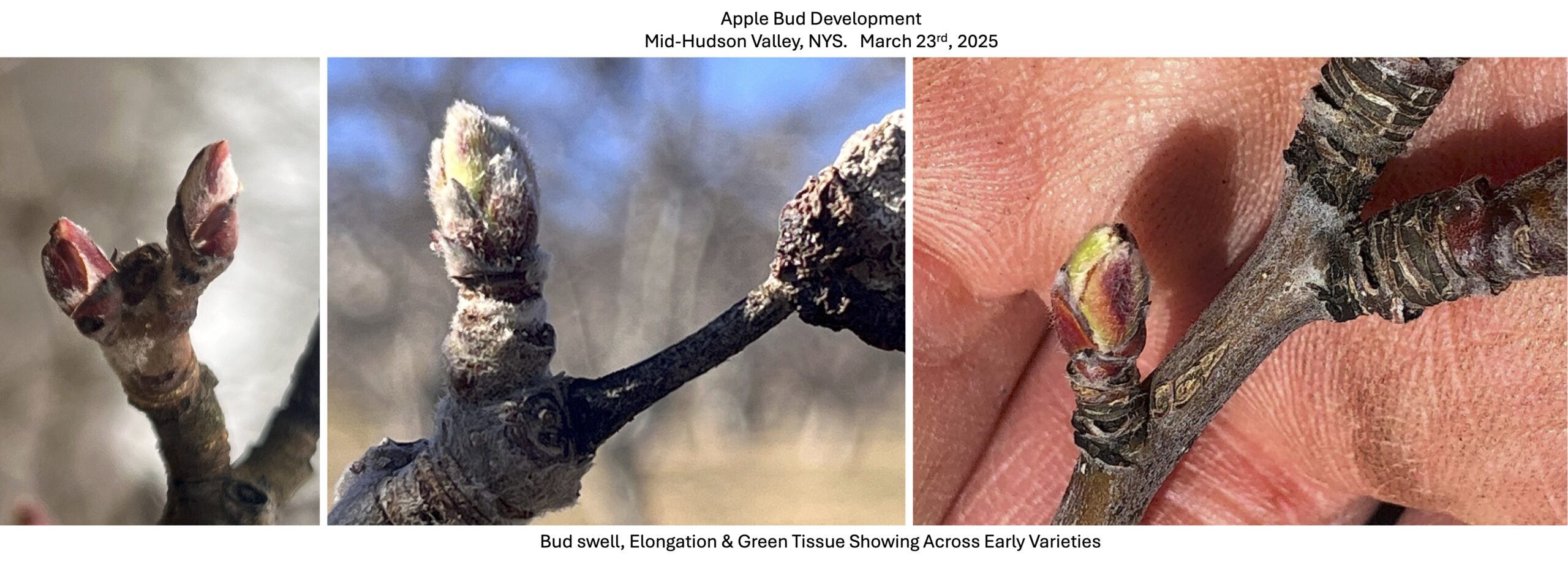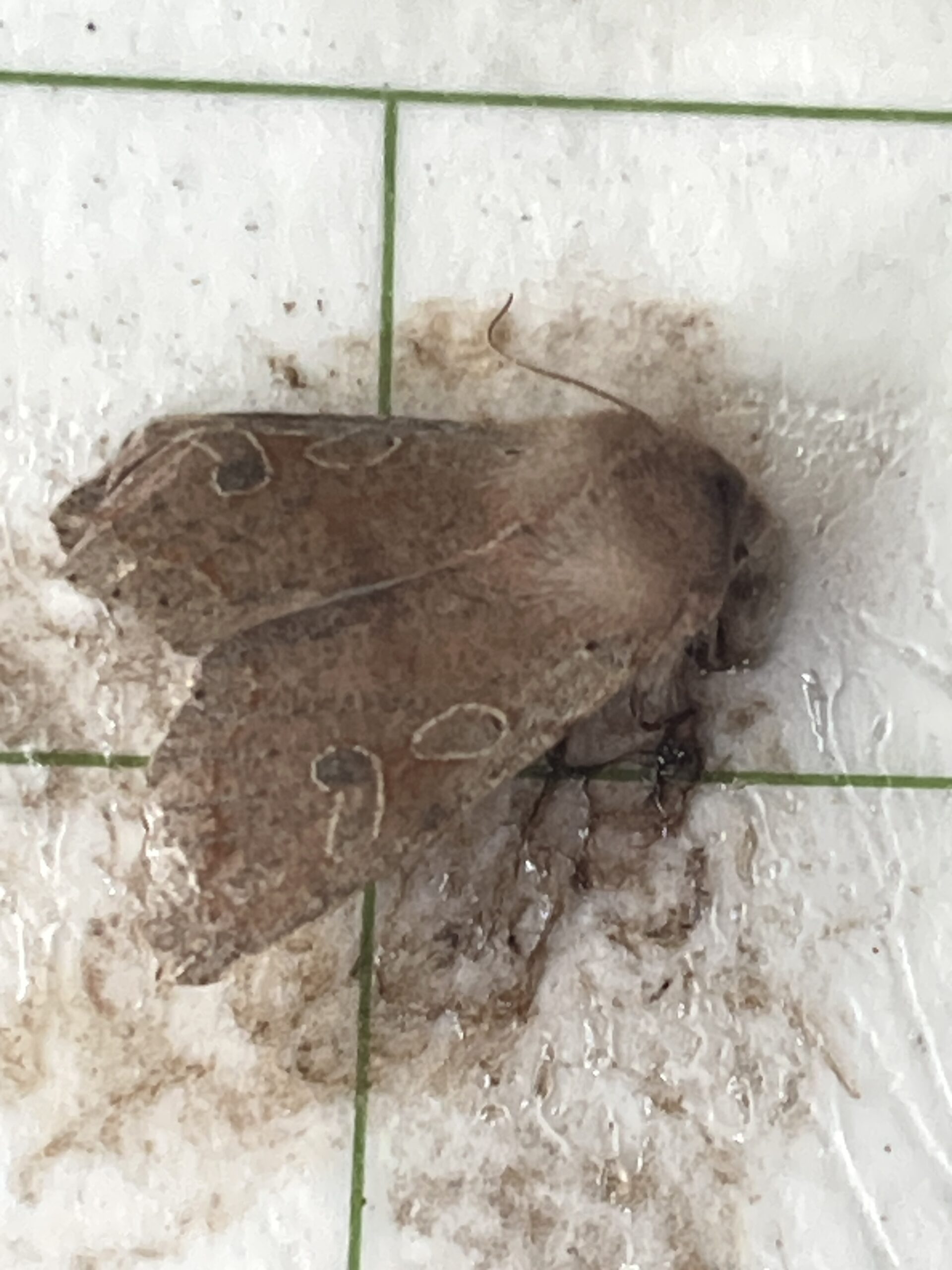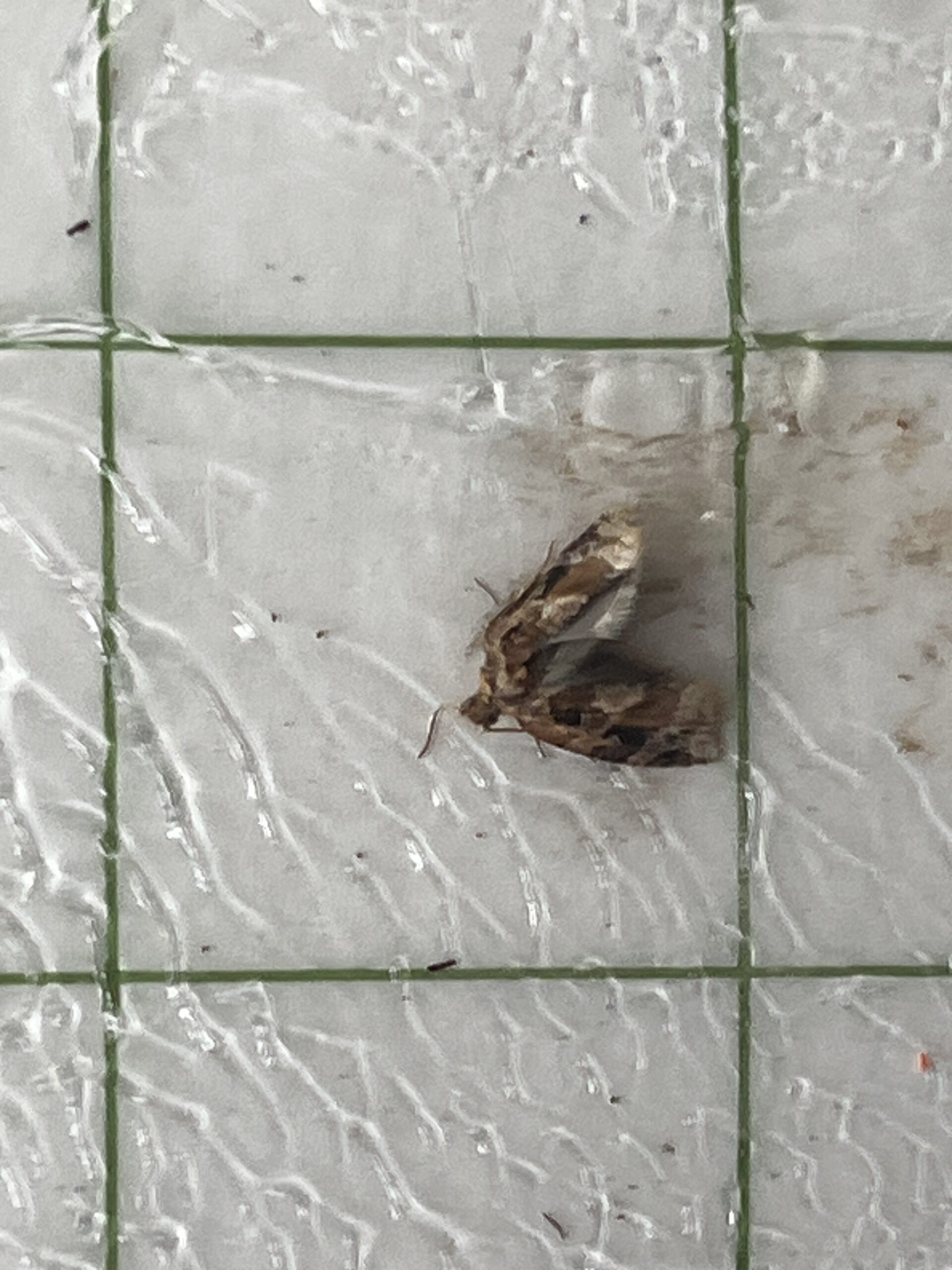 Overview: Recent rains and wind over the past week have provided somewhat challenging conditions for copper and oil applications now that buds are showing the onset of green tissue. This is an import time to address the overwintering diseases, mite and scale that may require early management in orchards.
Overview: Recent rains and wind over the past week have provided somewhat challenging conditions for copper and oil applications now that buds are showing the onset of green tissue. This is an import time to address the overwintering diseases, mite and scale that may require early management in orchards.
Now that green is showing, our options for controlling both arthropods and disease need to be considered. Yet, low overnight temperatures over the next five days will keep us from applying oil until the weather breaks on Friday (March 28th) to keep foliage from becoming damaged See Rosenberger comments below).
For blocks that had San Jose scale (SJS) at pack out, multiple strategies should be considered and employed to manage SJS this season. Focusing on the pre-bloom period:
• Esteem 35WP @ 4-5 oz./A can be employed without the use of oil. However Centaur 0.7WDG @ 34.5 oz./A Sivanto Prime @ 10.5-14.0 fl.oz./A do require a penetrant will provide commercial control of SJS applied at the pre-bloom stage of apple. Additional strategies using Movento (also requires a penetrant) at petal fall and during the emergence period of SJS crawlers using contact insecticides should also be considered.
Once beyond the threat of frost, Oil at 2% HIG and 1% TC on through the season will provide mite suppression and significantly reduce SJS. Yet, excellent coverage is essential for oil to smother European red mite eggs and scale as temperatures rise and as insects respire. Again…Caution is recommended for applications this week as predictions of 25F and freeze events through Thursday, March 27th. Do avoid the chance for absorption of copper with oil leading to toxicity of green tissue. The same holds true for the use of Captan over oil residue. Uptake of these materials are phytotoxic to plant tissue if absorbed by developing foliage, resulting in deformed cluster leaves and loss of optimal photosynthesis for newly developing fruit and newly planted tree extension growth.
Fire Blight: As we now move past the dormancy and silver tip stage of apple into early green tip, copper can be employed alone or with oil (once outside the window of freeze events). If applications have already been made this past week, redistribution from upcoming rains over the the next two days will continue to reduce early infections of apple scab and kill off inoculum of fireblight from cankers residing within the orchard.
Last year was a difficult year for apple scab, which warrants the use of copper in many orchards this season.
The majority of copper products used in tree fruit production tend to be “fixed” or relatively insoluble in water and safer to plant tissue. When added to water fixed copper becomes a suspension of copper particles. As the copper particles are stable on the plant surface, residing on the surface of leaves, stems and branches as the application dries, the copper ions are ‘released’ slowly, reducing the risk of phytotoxicity while providing residual disease management.
Some points to keep in mind this spring regarding copper.
(excerpts from Dr. D.R. Rosenberger (Scaffolds March 12, 2012, pg.6-9)
1. ‘Solubility of fixed coppers increases under acidic conditions. As a result, copper sprays will become more phytotoxic if they are applied in an acidic solution. Acidifiers such as LI-700 and non-buffered phosphite fungicides should not be tank-mixed with copper fungicides.’
2. ‘When buds are already showing green tissue, do not apply copper just prior to predicted frosts because the cells ruptured by frost crystals may resorb and be killed by the copper on the bud surfaces.’
3. ‘Adjuvants have highly variable and largely unpredictable effects on the efficacy of copper sprays. We know from years of experience that copper products can be combined with oil in delayed dormant or green tip sprays if oil is being applied to control mites. Otherwise, using one quart of spray oil per 100 gallons of finished spray solution may enhance coverage of the wood in these early season sprays, but using higher rates of oil does not “lock in” the copper deposits to enhance residual activity. No other adjuvants are necessary or recommended on tree fruits.’

 Early Flyers: In the Hudson Valley it’s a fairly predictable event to catch the green fruitworm (GFW a larger moth with ‘eye spots’ on primary wings) and red banded leafroller adult (RBLR much smaller with banded wing pattern), flying during the warmest days of early March. Yet the damage to developing flowers and fruit can be sporadic and in some seasons quite severe from year to year, especially noted in the Champlain Valley. The images were taken of the insects in traps set on the 18th March. Cold temperatures will reduce activity from these insects throughout the early part of the week but they will begin mating and laying eggs with larval hatch beginning in April – May.
Early Flyers: In the Hudson Valley it’s a fairly predictable event to catch the green fruitworm (GFW a larger moth with ‘eye spots’ on primary wings) and red banded leafroller adult (RBLR much smaller with banded wing pattern), flying during the warmest days of early March. Yet the damage to developing flowers and fruit can be sporadic and in some seasons quite severe from year to year, especially noted in the Champlain Valley. The images were taken of the insects in traps set on the 18th March. Cold temperatures will reduce activity from these insects throughout the early part of the week but they will begin mating and laying eggs with larval hatch beginning in April – May.